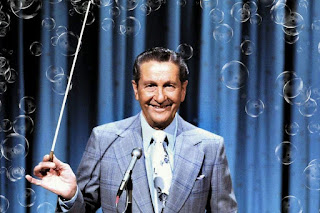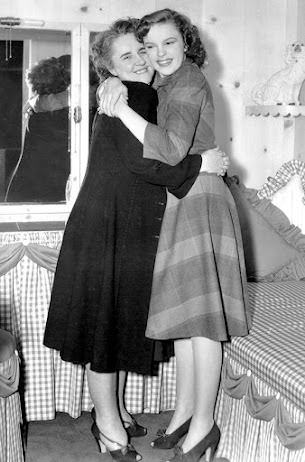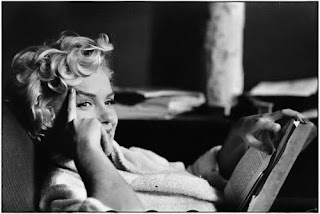Here is the obituary for bandleader Lawrence Welk as it appeared in Chicago Tribune on May 19, 1992 - 31 years ago today!
Lawrence Welk, the band leader whose folksy charm and bubbly brand of
''Champagne music'' shaped the longest-running show in television history, died on Sunday evening at his home in Santa Monica, Calif. He was 89.
Mr. Welk had been suffering from pneumonia and dementia in recent days, said Bernice McGeehan, a spokeswoman for the Welk Group.
With diligence, drive and a cheery ''ah-one an` ah-two,'' the self-taught maestro became one of a handful of television entertainers who defined the viewing habits of a generation.
He rose from an immigrant farm family in a German-speaking hamlet in North Dakota to become one of the nation`s favorite entertainers.
The buoyant Mr. Welk presided over ''The Lawrence Welk Show'' on ABC on Saturday evenings from 1955 to 1971, when the show was dropped because sponsors said its audience was too old, too rural and too sedate.
Undaunted, Mr. Welk signed up more than 250 independent television stations in the U.S. and Canada and kept the show on television for 11 more years. Repackaged as ''Memories With Lawrence Welk,'' the show has been appearing on public television on Sunday afternoons since 1987.

Mr. Welk was a strict taskmaster, demanding from his performers hard work, thrift and self-discipline. He kept his musical family-stalwarts like the ''champagne lady,'' Norma Zimmer, and the Lennon Sisters-basically intact, at times even by arbitrating marital disputes. These are some of the professional precepts on which he insisted:
''You have to play what the people understand.''
''Keep it simple so the audience can feel like they can do it too.''
''Champagne music puts the girl back in the boy`s arms-where she belongs.''
''He was really on the pulse of his audience. We did three tours a year to find out what the people wanted to hear,'' said Bobby Burgess, a dancer on the Welk show from 1961 to 1982. ''They had to be able to feel that they could dance along with us.''
Over the decades, Mr. Welk became, after Bob Hope, the second-wealthiest performer in show business, and his band and production company became the second-biggest tourist draw of Southern California, behind Disneyland.
Components of the multimillion-dollar Welk conglomerate include a large music library and ownership of the lucrative royalty rights to 20,000 songs.
Among them are the entire body of Jerome Kern`s work, which Mr. Welk bought for $3.2 million in 1970. The heart of the real estate empire was the Lawrence Welk Village, a 1,000-acre resort-and-retirement complex at Escondido, Calif., near San Diego.
The Welk dance band offered an easy mix of pop, swing, Dixieland, country, Latin, polkas and inspirational music. Detractors called it tinkly Mickey Mouse music dispensed to geriatric audiences.
Fans adored the sentimental show as a constant in a changing world and as a reassuring time capsule of a simpler, happier time.
Mr. Welk was born on March 11, 1903, in a sod farmhouse in the prairie village of Strasburg, N.D., one of eight children of the former Christine Schwab and Ludwig Welk, immigrants from Alsace-Lorraine, a region of France that was once part of Germany.

His father was a blacksmith turned farmer. The boy dropped out of the fourth grade to farm full-time until he was 21.
At night, his father taught him to play an inexpensive accordion, and from the age of 13 he earned money playing at social gatherings. At 17, he played in local bands and formed a group, the three-piece Biggest Little Band in America, to help inaugurate radio station WNAX in Yankton, S.D.
At 21, he announced he was leaving the farm for a life as a musician.
''You`ll be back,'' his father predicted. ''You`ll be back just as soon as you get hungry.''
At 24, he put together a six-piece band called the Hotsy-Totsy Boys. He also bought and operated a series of small businesses, one of which featured an accordion-shaped grill that served a product called squeezeburgers.
These projects failed, but his fortunes improved as he led bigger bands in ballrooms and hotels in bigger towns and on radio, mostly in the Midwest.

He then moved to Los Angeles, where his show was first telecast. In 1955, when he was 52, his coast-to-coast television program began its record run.
Still, he never overcame his shyness and used prompters to make even brief announcements. He rejected cigarette and beer advertising, hired no comedians for fear of off-color jokes and deleted suggestive lyrics from the orchestra`s material. His honors included playing at the 1957 inaugural ball of President Dwight D. Eisenhower.
Mr. Welk recounted his life and its lessons in several popular books written with McGeehan, including ''Wunnerful, Wunnerful!'' (1971) and ''Ah-One, Ah-Two!'' (1974).
He is survived by his wife, the former Fern Renner; a son, Lawrence Jr.; two daughters, Shirley Fredricks and Donna Mack; and eight grandchildren...






















.jpg)
.jpg)













